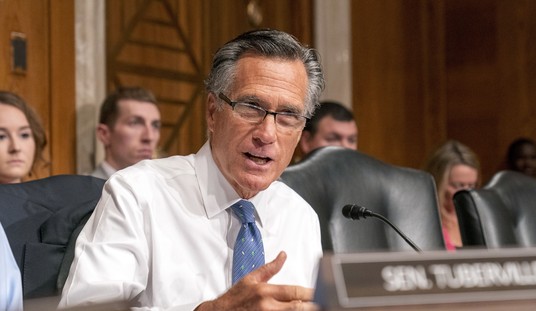As Democrats try and shame Republicans about executing their constitutional duty over the looming Supreme Court fight to fill the vacancy left by Justice Antonin Scalia, let’s not forget that the highest court in the country had eight members and we survived. At one time, we had seven members and our legal system did not collapse. Yes, both parties have politicized judicial nominations, but Democrats seem to be the ones trying to say that it doesn’t matter what was said in the past. I know, how convenient for them. So, while the left tries to play the race card, the unprecedented obstructionism card, and whatever card that could place pressure on Senate Republicans to at least hold a hearing for President Obama’s Supreme Court nominee, let’s go back through history (again) and see how the Court can function just fine with eight members. Yes, some cases were re-argued, but the vast majority of cases before the Roberts Court have not been highly controversial:
In May 1945, President Truman selected Justice Robert H. Jackson to serve as chief prosecutor at the Nuremberg Tribunals. From then until Jackson’s return in October 1946, the court set three cases for reargument. One was the landmark Adamson v. California, where the court held that the Bill of Rights placed no limits on state action. Adamson was originally argued in January 1946, while Jackson was abroad, then reheard in January 1947. It was finally decided in June 1947, with Jackson the tiebreaking vote.[…]
The 1960s saw an extended period of Supreme Court understaffing as President Johnson played musical chairs with various high offices. LBJ’s machinations concluded when the Senate rebuffed Justice Abe Fortas’s promotion to chief justice in October 1968, leading to Fortas’s resignation in June 1969.
That seat was empty for a year until Harry Blackmun, President Nixon’s nominee, was confirmed in June 1970. During this period eight cases yielded 4-4 decisions, and 18 cases had to be reargued. Blackmun cast the tiebreaking vote in six of the reargued cases, including Baird v. State Bar of Arizona, which prevented states from excluding attorneys who belonged to the Communist Party.
On Sept. 17, 1971, Justice Hugo Black resigned, and six days later Justice Harlan died. From September 1971 through January 1972, the court had seven justices. On Dec. 13, 1971, the septet heard Roe v. Wade. The court waited for reinforcements before deciding such a momentous case, though six of the seven justices would vote to invalidate a Texas abortion law. A second round of argument was scheduled for October 1972 with newly confirmed justices Lewis Powell and William Rehnquist. On Jan. 22, 1973—303 days after the first argument—Roe was decided 7-2. Three criminal-procedure cases were also reargued, each breaking down 5-4.
[…]
The most recent relevant turnover occurred in 2005. Chief Justice Rehnquist died on Sept. 3, 2005, and the Senate confirmed John G. Roberts as chief justice on Sept. 29. Although Justice Sandra Day O’Connor had announced her retirement months earlier, she promised to stay on the court until her replacement was confirmed. That ended up being Justice Samuel Alito, who was confirmed in January 2006. During her brief “lame duck” period, Justice O’Connor would have cast the tiebreaking vote in three cases, all of which were reargued instead. In all three cases—involving the death penalty, “knock-and-announce” warrants, and the First Amendment rights of public employees—Justice Alito cast the decisive vote.
This history shows that today’s court is more than capable of doing its work with eight justices. By far the majority of cases the Roberts court decides aren’t closely contested. Last term only 19 of the 74 decided cases went 5-4. Of those, Justice Scalia was in the majority only six times.
Recommended
The point is that waiting for Scalia’s vacancy to be filled for the next president isn’t controversial at all; Democrats have voiced their support of it in years past. For Republicans, again, it’s whether they want to gamble holding the line, or possibly confirming a moderate justice if it looks increasingly clear that Hillary would win the general election.
























Join the conversation as a VIP Member